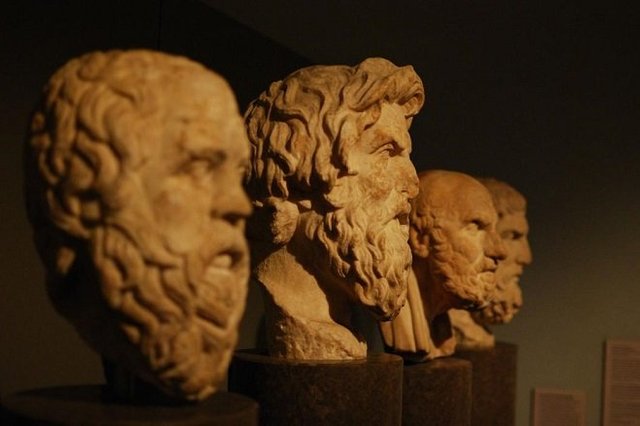Ancient philosophy. Anaxemander - about the boundaries of the world in space and time. /part 2/
And since he envelops and regulates everything, he calls it divine. In his "Physics", Aristotle says: "The infinite is not a beginning, because the beginning would limit it, it is only a beginning. To begin with, it has not come out and is not destroyed, everything born has an end, there is end to every process of extinction. Infinite has no beginning, and it is the beginning of all things. It all covers and governs everything, as those who, besides the infinite, assume, do not accept another beginning, and this beginning is considered the theon / because it is immortal, as Anaxemander teaches. "/ Aristotle-Physics, III /
In the history of philosophy, he has argued a lot about how to understand the essence of apeirona at Anaximander. Some thought it was a mechanical compound of all the world's qualities that it was a collection of all qualities, a mixture. Others say that it will be some extremely thin matter, and even define it as lighter than air and heavier than the fire - something like the air. Third, they rightly believe that this is not a single, qualitative one a certain matter, or a fullness of qualities in the world, but it is the precious real unity of potential differences and opposites. Since everything in the world is qualitatively manifested and determined, as long as the world has a constant struggle against opposites, infinite, indefinite is the transcendent of the world, the fundamental different from it, since the indefinite is qualitatively indefinite. There is no difference and the fight against opposites. But we have seen that the infinite is at the same time immanent in the world: everything penetrates and governs everything.
How has it become possible now to bring the world out of the infinite? Anaxemander considers it the beginning which, although without certain qualities, contains the ability to produce everything. It is not inert and dead, but it is something alive and creative, which is in a constant movement, and it is precisely in the process of movement that its inherent potentially charged opposites gradually begin to separate, to be excommunicated. / Aristotle, Physics I, 4 p.287, and 20). At first, a pair of opposites, the cold and the warm, to which the air of the air and the fire correspond. Further from the action of warm and cold, the process of world formation is accelerating. Soon the contrast between dry and damp appears. The fire or the warm one, taking the lightest on the high.
Next to him is the air, as a sphere of the cold. Third, humid, water and water fumes come in. And finally, in the center of this spherical world lies the dry land itself. But the four spheres are not separate with any barriers, so they penetrate each other - not just the one next to each other but also the more remote. For example, the air is heated by the fire and therefore, as it moves, it rages upward. There he tears the fiery sphere of the individual rings, and they, in turn, under the action of warm and cold, are rounded out, shaped as separate luminous bodies, surrounded by bluish air. These air encircles have circular apertures through which the heavenly lights are visible from the ground.
